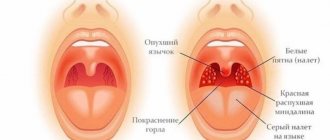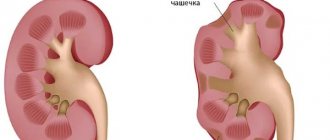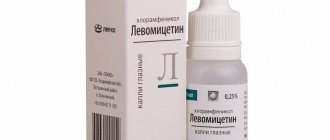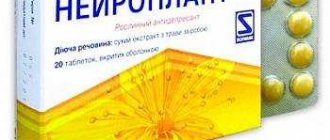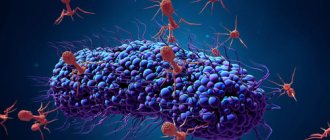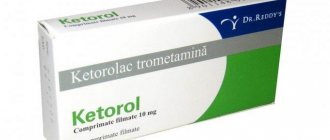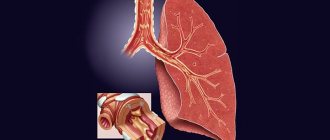Probiotics are medications that contain strains of live bacteria.
The product is sold in various forms and with different compositions. There are not only single-component probiotics, where only one type of microorganism is present, but also multicomponent ones.
The unique properties of the drug help achieve the following results:
- strengthening the immune system;
- restoration of microflora and intestinal mucosa after taking antibiotics;
- lowering blood cholesterol;
- rapid removal of toxins and allergens from the body;
- normalization of Ph balance in the colon;
- improving the absorption of vitamins and microelements.
Below are the best probiotics according to doctors and patient reviews. Please note that the information provided is for informational purposes only and does not constitute a guide to purchase. For any advice you should contact specialists!
The best mono- and polycomponent probiotics
Mono-ingredient probiotics contain only one strain of bacteria. These could be: bifidobacteria, lactobacilli, E. coli or bacilli. Such drugs are classified as first generation probiotics. That is, this was exactly the composition of the very first products for improving intestinal microflora. Multicomponent probiotics include from 2 to 30 strains or several types of live bacteria. For example, one preparation may contain four types of lactobacilli or a mixture of bifidobacteria and lactic acid streptococci. Due to their more complex composition, multicomponent probiotics have a complex effect on the intestinal microflora.
FAQ
Prebiotics or probiotics?
Probiotics (synonym - eubiotics) are live microorganisms that inhabit the human intestines. Prebiotics are chemicals that create a nutrient environment for the development of “good” bacteria and stimulate the formation of natural microflora. These drugs are often taken together and may be present in sorption probiotics.
How are probiotics different?
There can be a lot of differences. This includes what bacteria are in them and their quantity, and the presence of other excipients. Globally, all drugs, depending on the time of creation of the probiotic, are divided into several generations:
- Monocomponent - 1st generation of drugs, the simplest in their action, since they contain only 1 type of microorganisms (bifidobacteria, lactobacilli).
- Antagonists - 2nd generation, contain bacterial spores or fungi that are not normally found in the intestines, but suppress pathogenic microflora and are eliminated from the body over time.
- Multicomponent (Symbiotics) - 3rd generation, contain several types of bacteria that enhance each other's effects.
- Synbiotics - 4th generation, contain 1 type of bacteria and a nutrient medium for their reproduction.
- Multicomponent synbiotics - 5th generation, contain several types of bacteria and a nutrient medium.
Currently, probiotics of all generations are used, but the choice depends on the cause of the disease and the severity of the condition. It is very difficult to choose the right category on your own; we recommend doing this together with a specialist.
Which probiotics are best to take after antibiotics?
An important point: it is better to take probiotics along with antibiotics while changes in the gastrointestinal tract are not very pronounced. If you are late, the violations will be more serious and the course of treatment will take longer. Food products (yogurt, kefir, cheese), as well as medications, can be used as probiotics.
In such cases, products containing lactobacilli and bifidobacteria are often prescribed.
Ask your question
The best sorption probiotics
This category presents the best probiotic complexes, which in addition to living microorganisms include a sorbent. In the preparation, bacteria are united into small colonies (20-180 living cells), which are fixed on sorbents, most often activated carbon. This increases the survival rate of microorganisms in the stomach. A product with this composition gently and effectively cleanses the intestines, restores colonies of beneficial bacteria, and prevents poisoning and other stomach problems.
Tips for choosing
Which of the following probiotics will help cope with digestive problems depends on the disease. If the body needs help after a course of antibiotic treatment, it is better to use complex preparations with a prebiotic added. It will accelerate the colonization of the intestinal mucosa by bacteria.
Regardless of the name, preparations in the form of powder, capsules or solution are suitable for adults. The drops are designed specifically for young children who need a small dose of the drug. They are good to mix with drinks or mother's milk.
When using products with probiotic effects, symptoms of bloating, rumbling, and flatulence may increase due to the fermentation process. But this goes away on its own and does not require discontinuation of therapy. If an allergic rash appears while taking probiotics, treatment should be stopped.
Indications for use
The use of probiotics is indicated in all situations where the patient has an imbalanced ratio of beneficial and harmful intestinal bacteria. This happens in the following cases:
- Antibiotic therapy and associated diarrhea. Antimicrobial agents do not have a selective effect. Along with pathogenic microbes, they also destroy cultures necessary for the body.
- Intestinal infections and poisoning. Inflammation develops when the number of pathogenic bacteria exceeds the number of beneficial ones.
- Operations. Interventions in the digestive tract always cause problems. This is due both to the manipulation itself and to the subsequent course of antibiotics.
- Gastrointestinal diseases. Pathological processes in the intestines lead to an imbalance in the internal flora. These include gastric and duodenal ulcers, pancreatitis, and hepatobiliary disorders.
- Poor nutrition. Eating substances containing antimicrobial components, as well as avoiding dairy products, can lead to dyspeptic disorders caused by a critical decrease in the strain of bacteria involved in the gastrointestinal tract.
It is worth noting that a weakened immune defense, although an indication for prescribing probiotics to a patient, does not lead to dysbiosis. In this situation, a change in the composition of the microflora is the primary pathology that disrupts the functioning of the intestinal structures responsible for the formation of the immune response. Simply put, the death of the necessary microbes leads to the development of a deficiency in infectious defense, and not vice versa.
Reviews
You can leave a review about prebiotics for the intestines by filling out a special form:
| Leave feedback | |
| 1 2 3 4 5 | |
| Send Cancel | |
Send your review
Prebiotics
Average rating: Number of reviews: 0
Most people who have taken prebiotics write good reviews about these drugs. They claim that the products really normalize stool and digestion, as well as:
- eliminate bloating and abdominal discomfort;
- help restore microflora after intestinal infections;
- suitable for the prevention of diarrhea caused by antibiotics;
- improve overall well-being;
- reduce appetite.
There are few negative reviews about the drugs. Some buyers complain about the lack of effect from prebiotics produced by chain companies.
Synbiotics
They represent a group of drugs that combine the properties of probiotics and prebiotics (additives that enhance the effect of eubiotics). Among the synbiotics you can find a cheap analogue of Linex and many other medicines:
| Probiotic name | Indications for use | Contraindications | Price |
| Bifiform | Intestinal disorders, chronic constipation, enzyme deficiency. | Drug intolerance. | 420 rub. 30 capsules. |
| Bifilar | Digestive problems. | Pregnancy, breastfeeding. | 396 rub. 30 capsules. |
| Acipol | Treatment and prevention of intestinal disorders. | Drug intolerance. | 286 rub. 30 capsules. |
| Bifiliz (Vigal) | Intestinal dysfunction, inflammatory diseases of the digestive system. | Intolerance to the composition. | 408 rub. 10 bottles. |
- At what age are cats castrated?
- Making homemade apricot pastille
- Dietary soups - recipes with photos. How to cook light vegetable or chicken dishes for diet and weight loss
Where can I buy
Some drugs from the rating can be purchased at a pharmacy chain or ordered online, but the prices of the drugs are often 1.5-2 times inflated.
We recommend ordering Prebiotics from iHerb.com. This well-known online store offers a wide selection of quality products, prices 30-50% lower than pharmacy prices, many customer reviews and fast delivery worldwide.
Buy Prebiotics at
Get up to 10% discount using our promo code:
AGK4375
Activate
The promotional code is activated in the cart after adding the 1st product and is valid only for the 1st order.
Is it possible to replace symbiotics with products from the refrigerator?
The composition of symbiotic products includes probiotics (beneficial microorganisms), as well as vitamins, oligosaccharides and biologically active immune proteins. To include all these components in your diet without resorting to taking medications, you need to consume daily:
- fermented milk products (it is advisable to make them yourself from special starter cultures);
- sauerkraut;
- cottage cheese and cheese;
- fermented miso soybean soup (traditional Japanese dish);
- various soy products: tofu cheese, quality soy sauce;
- sourdough bread (preferably homemade);
- onions and leeks;
- homemade pickles (barrel cucumbers, apples, tomatoes, but always without adding vinegar - the brine must be natural);
- fresh fruits, such as bananas.
But simply consuming such products will not be enough: in order for beneficial microorganisms to settle in your body, you need to plan your menu so that it also contains prebiotics - substances that bacteria feed on. For example, in the first meal you can include kefir, oatmeal and banana - everything goes well and complements each other.
High-quality dietary supplements that contain probiotics with prebiotics will be an excellent addition to your diet. They are especially necessary during the treatment period, when even the most balanced menu is not enough to achieve the desired result. The main thing is to choose such additives correctly. They must be free of preservatives and dyes, otherwise the probiotics in such an environment will die before they enter your body.
Natural remedies
Probiotics contained in fermented milk products, as well as kombucha, olives, dark chocolate, and bran can be considered natural. Similar cultures are also available in industrial products.
The main difference is that chemical preparations also include a number of additional excipients. Prebiotics of natural origin include products containing inulin, a unique substance that is not synthesized artificially.
Fans of folk herbal medicine can use plants such as elecampane, burdock, and dandelion as prebiotics. They also contain a lot of inulin. It is best to consume the roots of the given representatives of the fauna, since it is there that the largest amount of the required substance is contained.
Intestinal dysbiosis Medicines for diarrhea for adults: TOP 10 best remedies for diarrhea Irritable bowel syndrome Use of ASD fraction 2: benefits and harm for humans E. coli Intestinal colitis
What is the difference between the drugs?
Many people without medical education are often confused by such specific terms as probiotics, prebiotics, synbiotics. However, in the case of a visit to the pharmacy and when purchasing similar products to stimulate the immune system and improve digestion without a prescription, you need to know the difference between these terms. Let us explain them in accessible language.
- Probiotics are preparations that contain various beneficial living microorganisms, most often bacteria, cocci, and yeast. As for prebiotics, the prefix “pre-” means “before”, and “bio” means “life”.
- Prebiotics are drugs that do not contain strains of living bacteria, but they help them settle in the intestines and improve the functioning of normal microflora, helping it defeat pathogenic microorganisms. In other words, prebiotics stimulate the activity of probiotics. It is advisable to prescribe these drugs in turn. An example of a prebiotic is Hilak Forte, which contains a ready-made medium for the growth and reproduction of beneficial microorganisms.
Symbiotics - myth or reality?
Sibmotic medications and probiotic-enriched foods are in demand among people of all ages. Their popularity is growing, just like the number of speculations that are associated with them.
Here are the most common of them:
- With long-term use of 1st generation dietary supplements, you can achieve the same effect as when taking 4th-5th generation drugs.
— The best symbiotics are the latest generation of drugs, since they pass through the acidic environment of the stomach without damage and successfully settle in the intestines. It is impossible to achieve such an effect by taking first-generation dietary supplements in any quantity.
- By taking symbiotics, I can eat anything.
“This is a big misconception, since it is nutrition that influences how the body perceives the influx of microorganisms, how they take root in it, and how quickly the effect will be noticeable. The more fast food and other unhealthy foods you eat, the less effective this treatment is.
- Yogurts contain all the necessary probiotics.
— Store-bought yogurts are, first of all, commercial products that should attract the buyer with their appearance, taste, and smell, so they usually add sugar, dyes and artificial flavors that suppress the activity of bacteria.
In addition, such products do not have the ability to deliver beneficial microorganisms directly to the intestines - they die in the acidic environment of our stomach.
- Probiotics live only in the intestines.
- In addition to the intestines, they also inhabit the oral cavity, esophagus, genitals, armpits, they are even on the lips - that is, in almost every area of our body.
Prebiotics for the gut
A distinctive feature of this group of substances is the absence of any beneficial bacteria . Such preparations contain minerals, vitamins, dietary fiber and other substances involved in the metabolism of the intestinal flora . The most common natural prebiotic is plant fiber, which is found in all vegetables and fruits. It is not broken down by digestive enzymes, but is fermented by normal microflora. As a result, fiber stimulates its growth and normalizes the activity of beneficial bacteria.
They have a similar effect:
- Oligosaccharides from soy, fruit and milk.
- Some amino acids (arginine, valine, glutamic acid).
- Lactulose.
- Lecithin and seaweed extracts.
- Cellulose, pectin, inulin, dextrin.
- Some enzymes.
- Plant extracts (pumpkin, carrot, potato, corn, rice, etc.).
- Soy and milk peptides.
- Fatty acids (eicosapentaenoic acid or EPA from fish oil).
- Monosaccharides (sorbitol, xylitol, raffinose).
- Acetic and citric acids.
Prebiotics for children
Due to the incomplete development of organs and systems, children are especially sensitive to all unfavorable factors. They suffer from intestinal dysbiosis much more often than adults. This occurs while taking antibiotics or other medications, as well as due to poor nutrition.
In childhood, two options for use are possible - a mixture with prebiotics or a separate drug. A rational choice should be made based on the child’s age and his ability to eat something other than mother’s milk.
Infant formulas with prebiotics
- Nutrilon Pepti Allergy.
- Nutrilon Premium 1 Pronutri.
- Nutrilon Premium 2 Pronutri plus.
- Baby milk Nestogen.
- Infant formula Nestozhen.
- Similac Premium.
- Nan Triple comfort.
- Milk replacer Nanny.
- Nanny classic mixture with goat milk.
- Hipp Combiotic Blend.
- Infant formula MD Mil Kozochka.
- Bellakt Optimum mixture.
In addition to the mixtures listed above, prebiotics are contained in many food products for children, so before purchasing, carefully read the label on the package.
If the child is no longer fed infant formula, then add prebiotic dietary supplements (dietary supplements) and the medications described below to his diet.
You can read about how dietary supplements differ from medications here.
The best prebiotics, list of drugs
The selection of a drug is always based on three indicators: price, ease of use and expected therapeutic effect. We believe that the drugs listed below have a clear therapeutic effect. Therefore, when purchasing, you should be guided by the remaining two criteria: the cost of the drug and the ease of administration for a particular patient.
List of Gut Probiotics
| Drug name | Compound | How to take a prebiotic |
| Bactistatin (dietary supplement) | Bacterial metabolites, vitamin E, zeolite sorbent, soy flour hydrolyzate | During meals, 1-2 caps. 2-3 times a day (the dose depends on the patient’s age) |
| DufaMishki (dietary supplement) | Lactulose | Take 1-3 chewable lozenges daily (the dose depends on the patient’s age) |
| Lactofiltrum (medicine) | Lactulose, lignin | From ½ to 3 tablets. 3 r/day for 14-21 days. Use between meals |
| Stimbifid (dietary supplement) | Zinc, selenium, inulin and oligofructose, vitamins C, E, B1, B2, PP, B5, B6, B7, B12. | 2-3 tablets each. 3 times/female for 1 month |
| Hilak-forte (medicine) | lactic acid, lactose, amino acids, fatty acids and other bacterial metabolites | Dissolve 15-60 drops in liquid (except milk), take 3 times a day before or during meals. |
| Eubicor (dietary supplement) | Wheat bran, apple pectin, inactivated yeast culture Saccharomyces cerevisiae (vini) | Used from 12 years old, 1-2 sachets 3 times a day with meals |
Some drugs contain prebiotic components, but are used as a laxative. These include Normaze, Duphalac and Mucofalk.
How to take prebiotics
Prebiotic drugs are the best way to prevent intestinal dysbiosis. Therefore, it is more advisable to take them before starting antibiotic therapy and hormonal therapy, as well as in case of mild intestinal dysbiosis. In addition, prebiotics are lower in cost than other eubiotics because they do not contain living microorganisms.
It should be noted that sometimes taking a prebiotic alone may have little or no effect. Dietary fiber and bacterial metabolites accelerate the division of normal flora. However, it happens that with serious damage, a small number of bacterial colonies remain in the intestines. In such situations, the most effective would be the use of probiotics or symbiotics .
Biologically active additives
Biological products can be Russian, imported and special - intended for children. It is advisable to consult a doctor about which of them should be preferred for adults or given to children.
| Domestic additives | These are not drug substitutes, but health products that correct the intestinal microflora. A cheaper product is Normoflorin V and L (prices from 200 rubles), as well as Bifacil , Biovestin , Polybacterin , Euflorin , Vetom , liquid concentrates of bifidobacteria, Laminolact , Biovestin Lacto , Normospectrum , Noxigelon , Probionic . |
| Imported additives | Primadophilus , Normobakt , Acidophilus , Probionix , Rela Life , Flora-Dophilus , Rioflora immune Symbiolact comp., Yogulact , Rioflora Balance , Ecofemin Microflora Balance , Colifagina Pro . |
| Special dietary supplements for children | These are dietary supplements that have special formulas: Primadophilus Junior , Bifidus , Preema Kids ; domestic production - Bifidumbacterin-multi for children, Normobakt Junior . |
When using any of the supplements ( Vetom , Probionix , Rela Life ), the instructions for use must be carefully followed.
